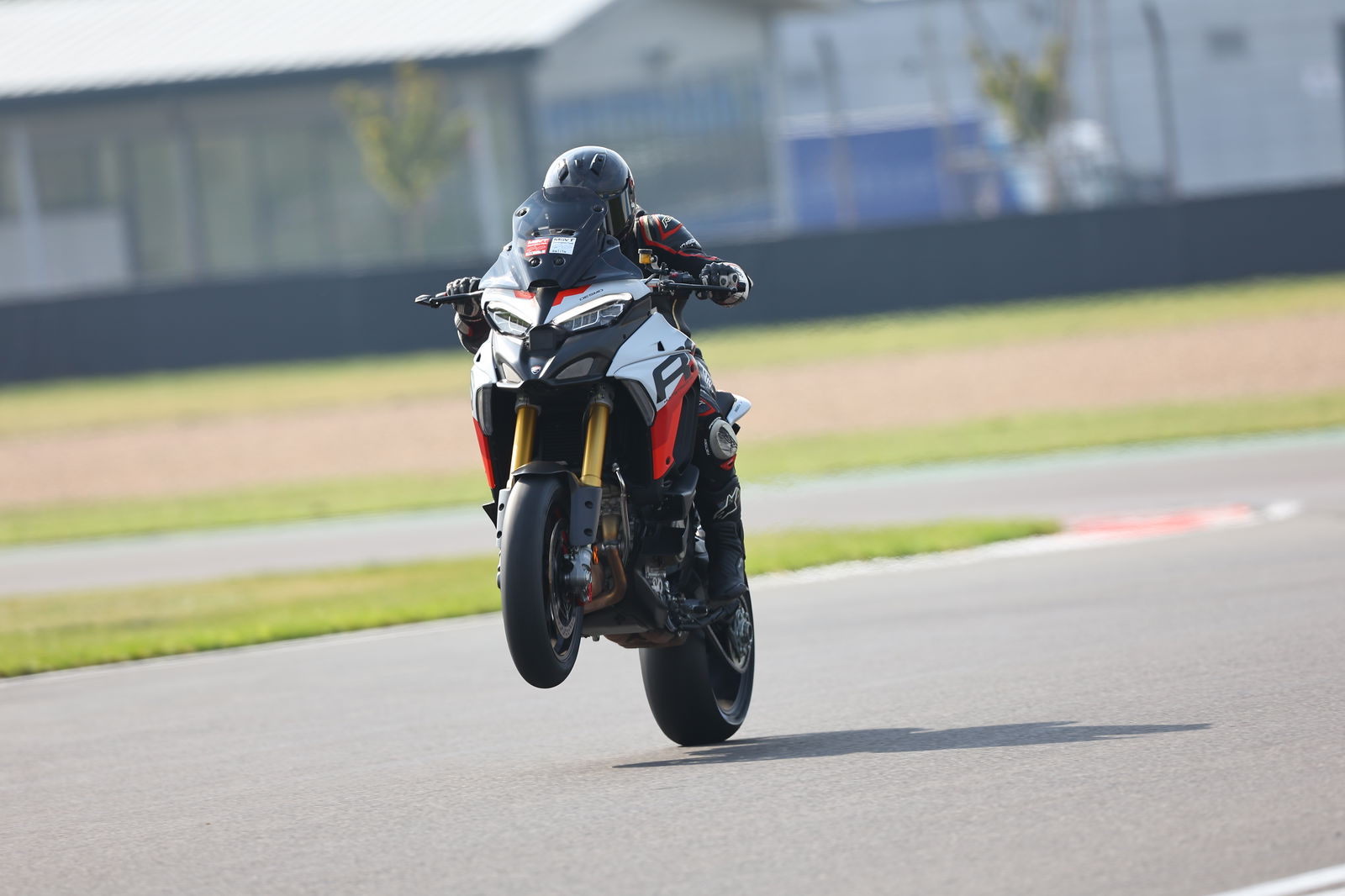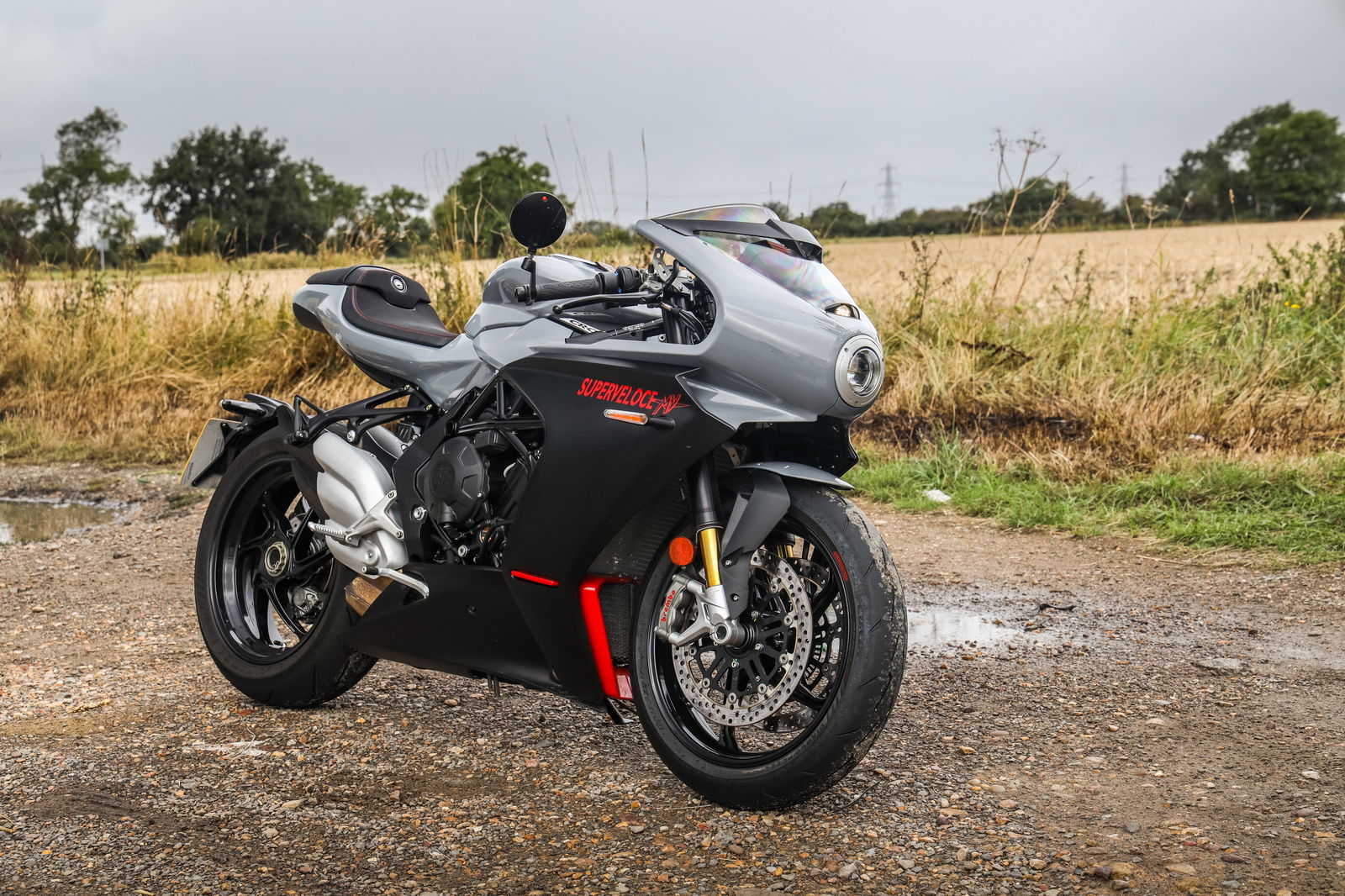Vespa 125 Primavera Review: Does Italian Chic Work in the UK?
I spent a week and a half with Piaggio’s Italian icon in Primavera form to see if it’s more than just a fashion accessory

In my head, I’m winding along a picturesque road on the Amalfi Coast, basking in the warm Italian sun. In reality, it’s an overcast autumn day in Peterborough. Perhaps that’s the Vespa’s strongest attribute - its allure is such that the dullest of days can be uplifted.
But is it more than just a cutesy fashion item? To find out, I spent a week and a half with a Vespa 125 Primavera, riding in urban and rural environments plus a couple of long-ish distance rides mostly using dual carriageways.
Vespa 125 pricing and availability
The Primavera is the cheaper of the two air-cooled, narrow-body Vespa models, coming in at £4,855, although at the time of writing, the price has been slashed to £4,355. Similarly, the Sportier-looking Sprint model (you can easily tell the two apart by the Primavera’s classic-look round headlamp) is usually £4,995 but down to £4,495 currently.
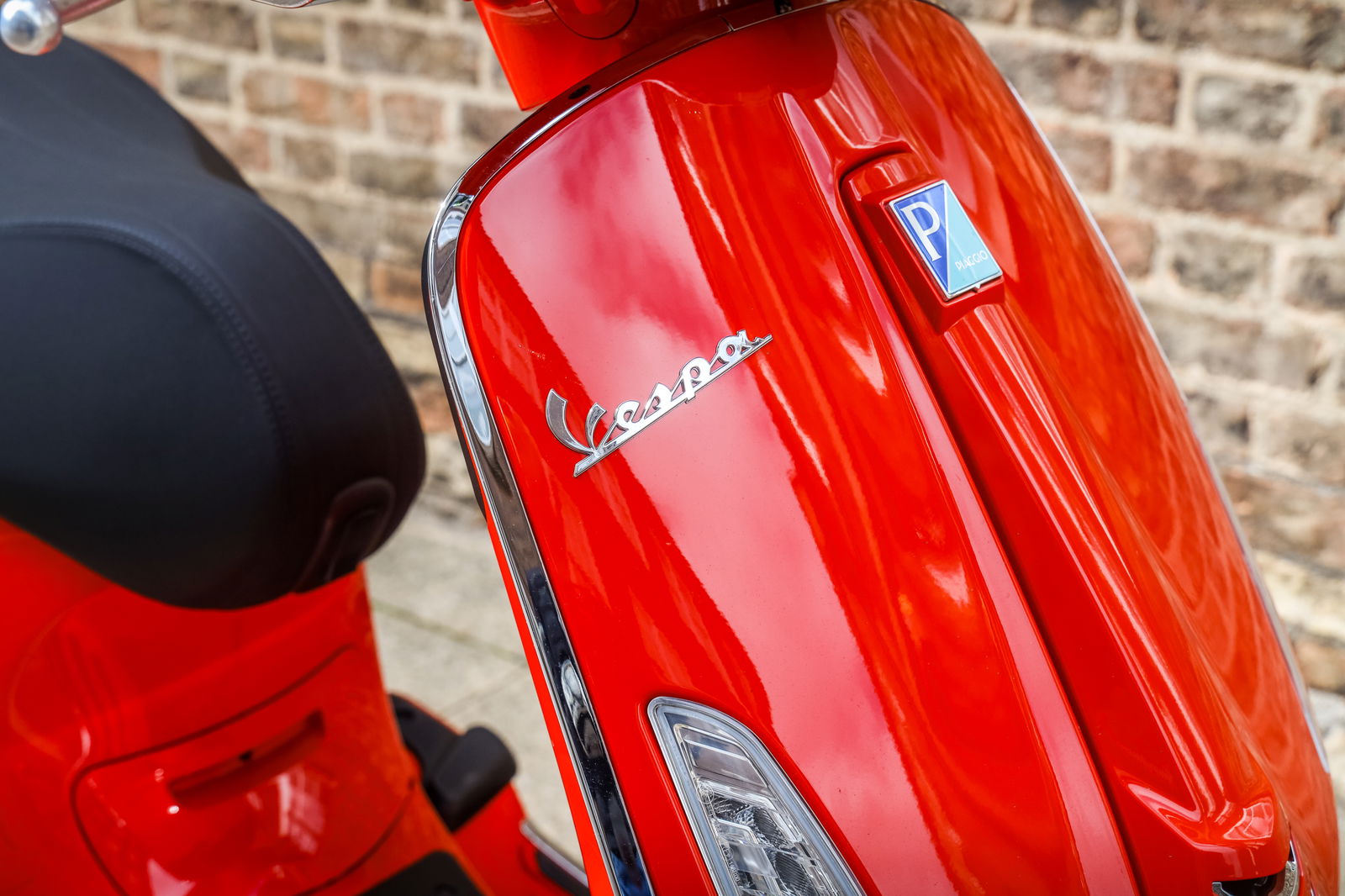
The £5,295 (£4,795 at the moment) Primavera Tech adds fancy styling touches, keyless ignition, and an LED headlight, while the Mickey Mouse Edition adds colours…lots of colours. All are available to order.
Engine, chassis and technology
There aren’t any real surprises here - if you’ve read the spec sheet of any 125 scooter this will all sound very familiar. On the engine front, the Vespa uses an air-cooled, four-stroke, three-valve single-cylinder engine displacing 124cc and producing 11bhp at 7,750rpm and 8lb ft of torque at 6,250rpm.
That engine is fed by an eight-litre fuel tank and sends power to the rear wheel via a continuously variable transmission (CVT). Just like the old two-stroke Vespa PX, the bike has single-sided link arm front suspension, while at the rear there’s a four-stage preload adjustable monoshock.

Up front, you’ll also find a 200mm disc brake, with a 140mm drum brake at the back. ABS is of the single-channel variety, operating on the front wheel only. Speaking of wheels, the Vespa 125 gets dinky 12-inch rims front and rear.
The dashboard features an analogue speedometer and a multifunction LCD display just beneath. It’s worth noting that a much larger portion of the speedo is in KMH - the MPH section squished underneath isn’t very big at all.
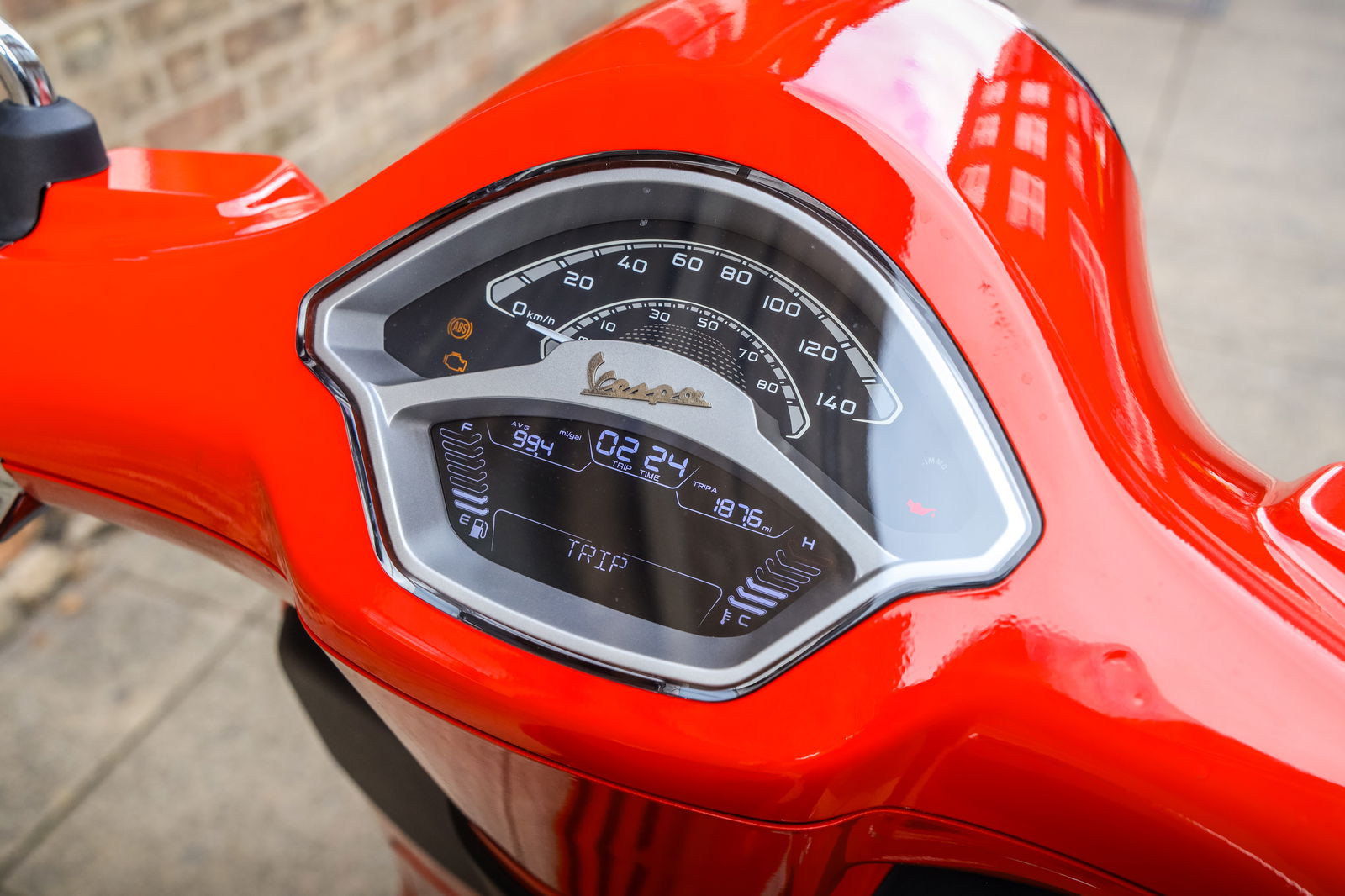
In terms of storage, there’s a small area under a flap just in front of your knees, and a decent-sized under-seat cubby hole which might just about fit an open-face helmet, but don’t expect to get a full-face lid in there (I tried and failed). It opens via an electronic release.
What’s it like to ride?
In a word, easy.
There’s a little bit of hesitation off the line with that typical CVT feeling of elasticity, as well as a bit of lag when rolling off the throttle, but you soon ride around it. In any case, the Vespa Primavera gets up to speed quickly enough, and certainly with enough vigour to beat dawdling drivers away from the traffic light Grand Prix if you’ve filtered all the way to the line.
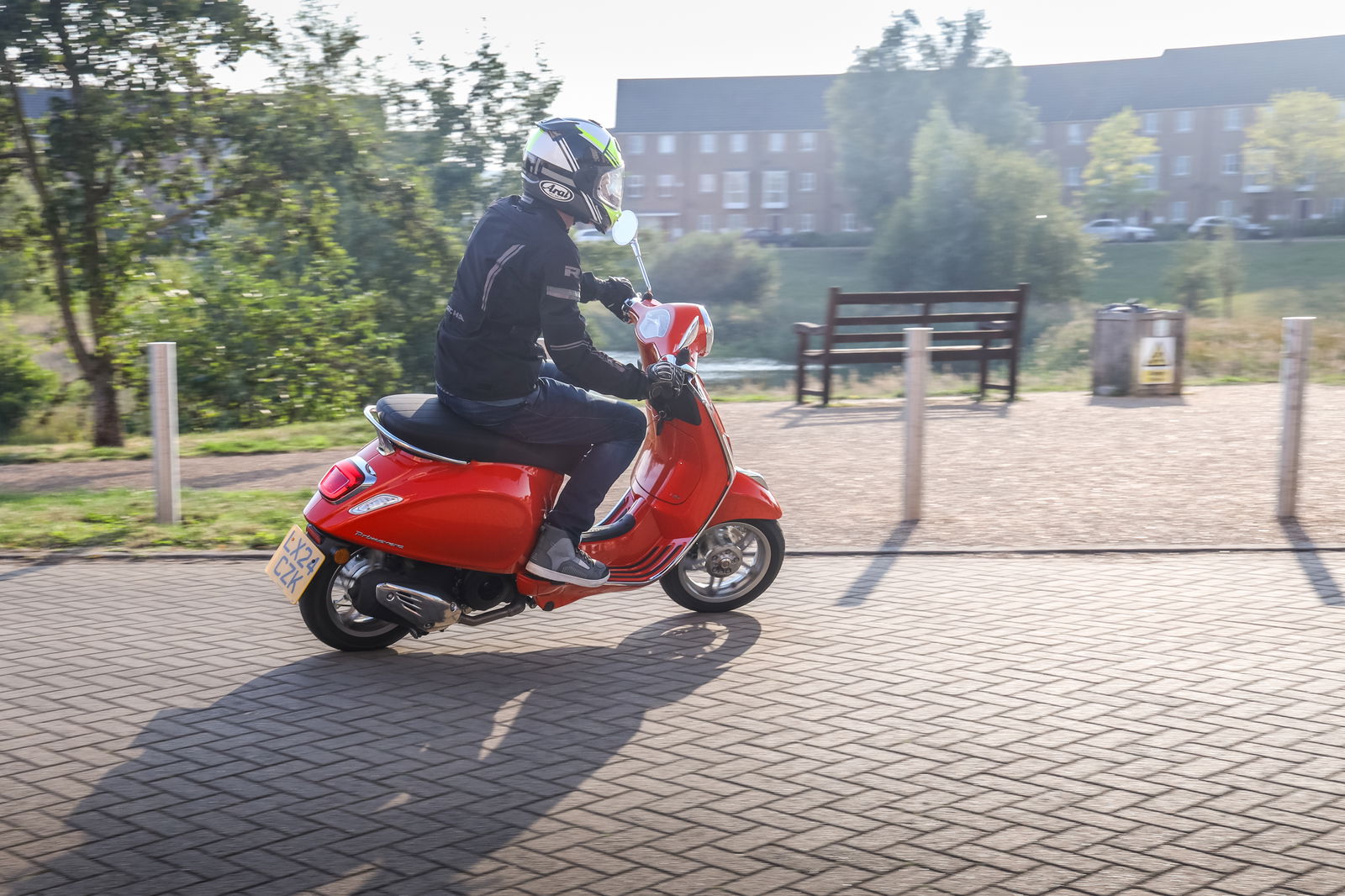
As is the way with 125s, beyond 40mph things start to get a little laboured and 50-60mph takes a long time. I did manage to nudge an indicated 70mph, but only with the assistance of gravity on a downhill stretch of dual carriageway. Uphill, meanwhile, you might have lorries overtaking you.
The solution to this if you’re restricted to A1 bikes is to go for the more expensive widebody GTS with its 14bhp water-cooled engine, and if you’re not, the GTS 300, which is more expensive still but puts out a useful 23bhp.
If you’re unlikely to be heading out of town that much, though, the Primavera and Sprint’s air-cooled lump does all it needs to. Most importantly, it’s smooth and refined, settling into the background nicely.

12-inch wheels mean you can get jostled around by badly surfaced roads where a 14-inch shod scooter might roll over more confidently, but the soft suspension does a decent job of soaking up the worst that the terrible UK road network can throw at the Vespa. Perhaps this is unsurprising given what carriageways in the bike’s native Italy can be like. Also helping comfort is the thick, soft seat.
The little wheels also mean it doesn’t feel like the most stable thing out there when you lean it over a bit more, but this is offset by a quick-steering attitude which for a scooter is more important anyway. For ducking and diving out of traffic, the Vespa is a real joy to ride. And because it’s a Vespa, there’s probably less chance of drawing the ire of other road users when the filtering gets a bit cheeky. How can you be mad at someone riding one of these?
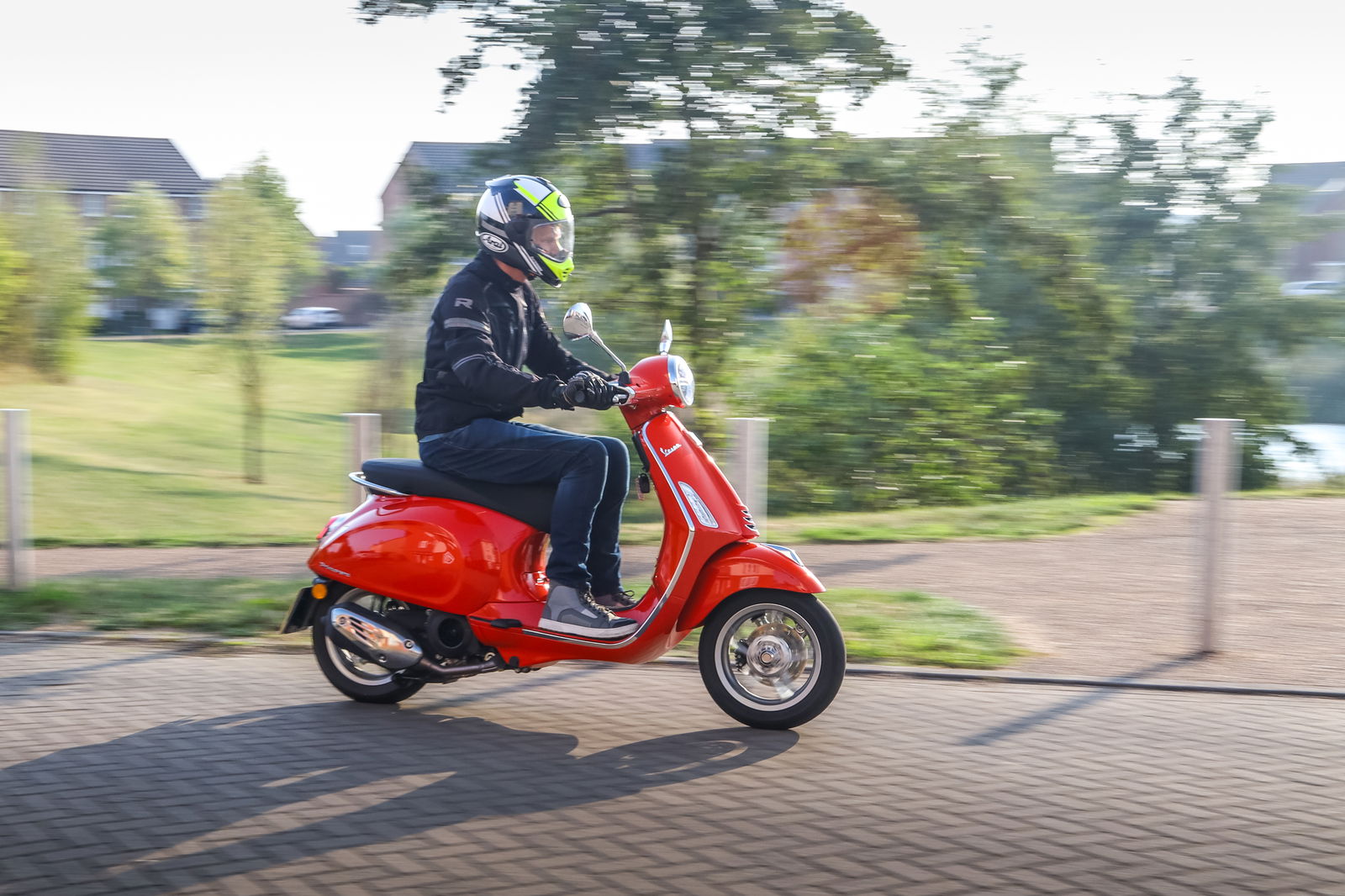
On the subject of filtering, the Vespa feels narrow, giving you the confidence to thread through gaps you wouldn’t normally entertain, even if in reality, it’s a scant 5mm slimmer than a Honda PCX.
The lack of fancy tech is noticeable, but the LCD display is easy to navigate using the rocker switch on the right-hand handlebar and displays all the information you might need, including a fuel range - not a given in the two-wheeled world.
Should you buy a Vespa 125?
If you’re solely concerned about value transportation, no. Considering its simplicity, the Vespa looks expensive, even with the recent price cuts, compared to the aforementioned Honda PCX, one of the best scooters around currently, which comes in at £3,659. But it’s not a Vespa, and for a lot of people, that matters.
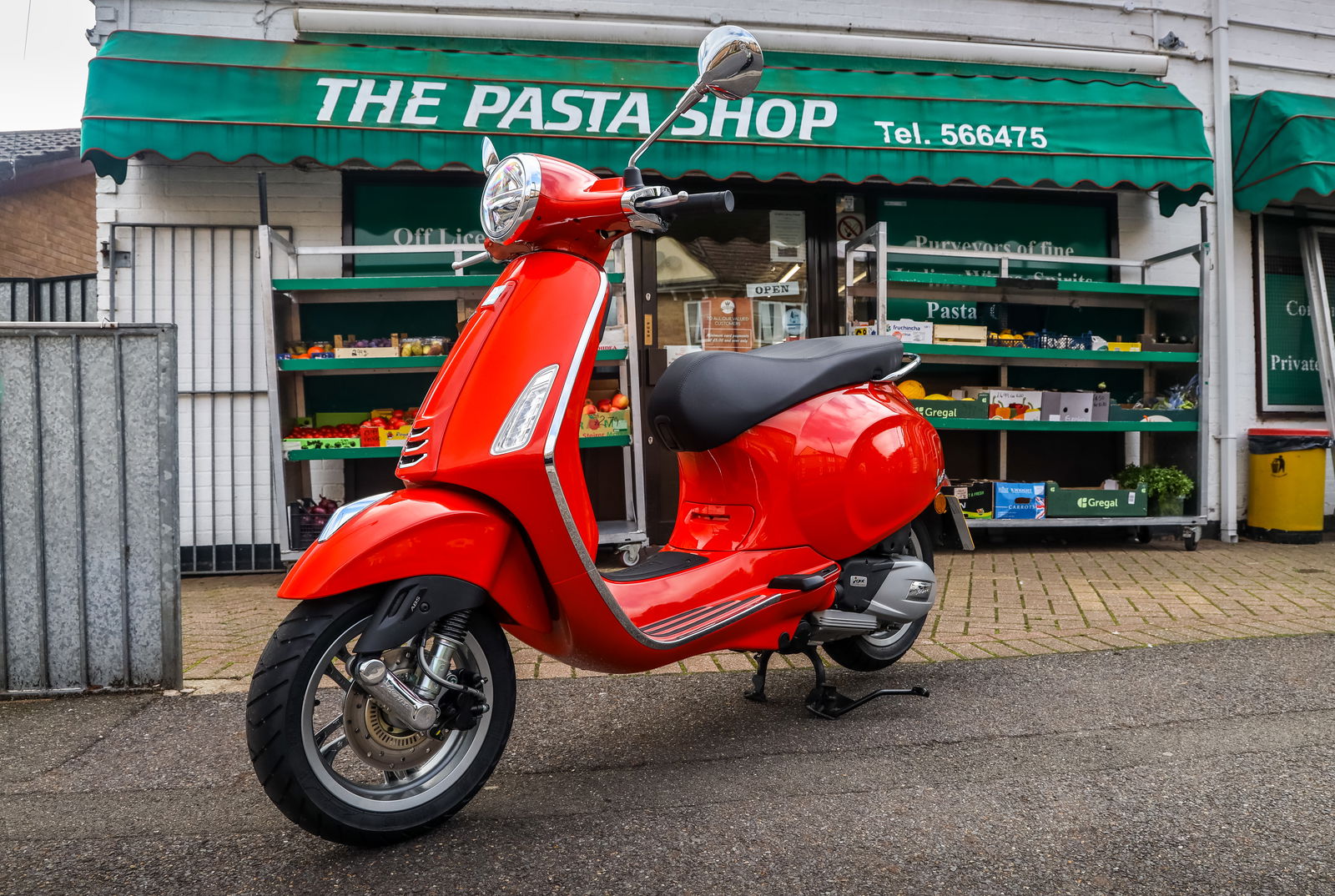
The modern Vespa models don’t have quite the outright charm of the old two-stroke PX models, but they’re still hugely appealing, particularly in the more retro-looking Primavera form. It’s something you’ll look back at after parking up and walking away, and there aren’t many other scooters you can say the same about.
Some of the parts and finishing feel more on the budget side of the equation, particularly elements of the switchgear, but an abundance of fancy brightwork and some eye-catching colours (to stand out you want to go for Verde Amabile or Arancio Impulsivo, as tested) more than make up for that.
Most importantly, it’s a fun thing to ride around on, making what would otherwise be a dull journey really enjoyable. And while it can’t quite make a cloudy day in Peterborough feel like a sunny one on the Amalfi Coast, it does a damn good job of trying.
